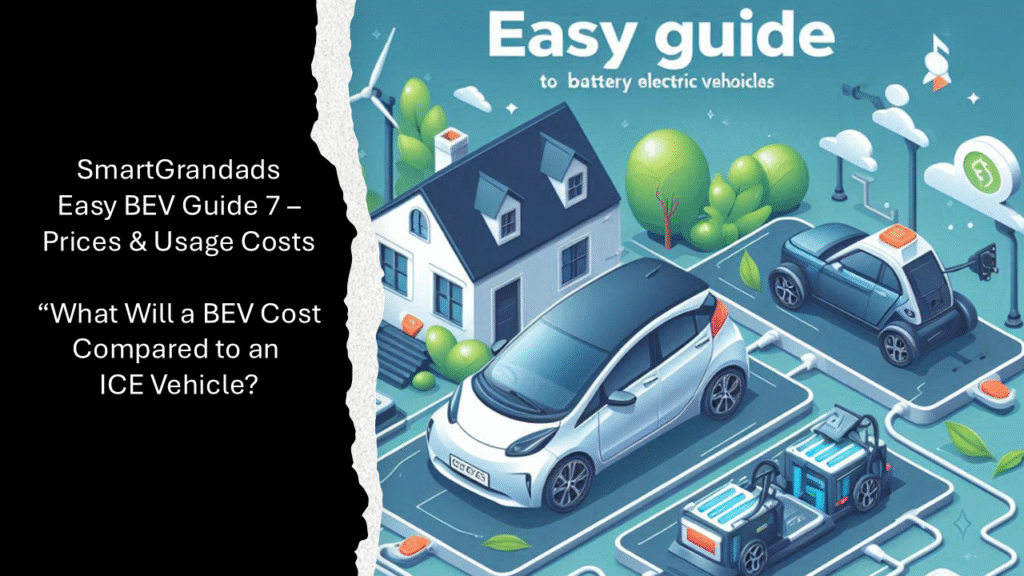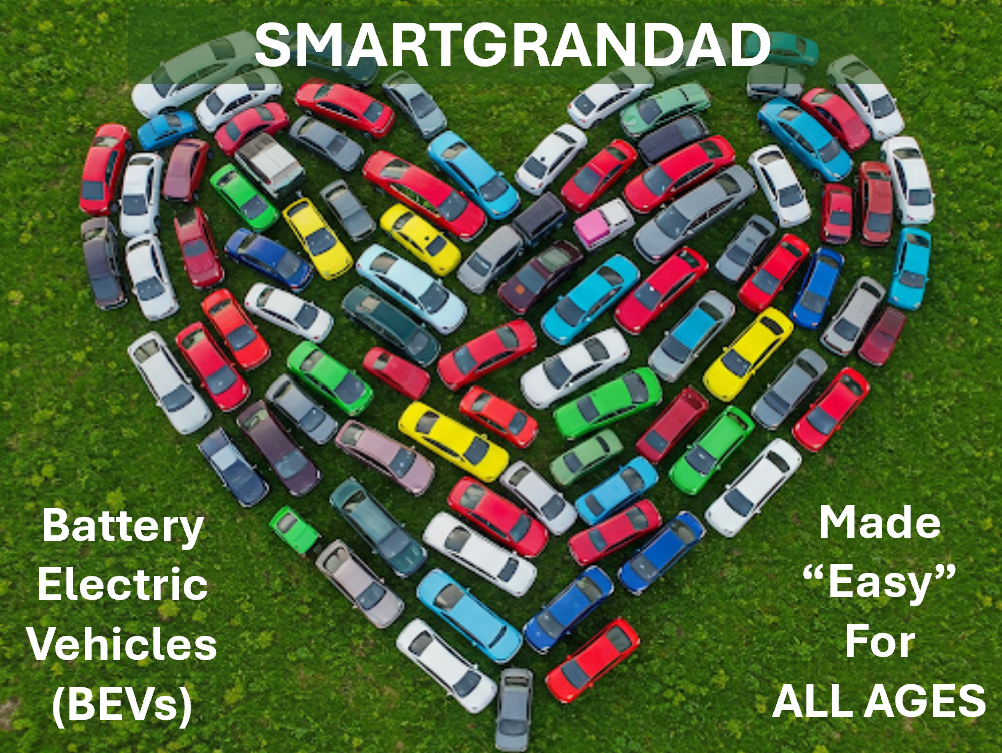POSTS > Opinions & Guides
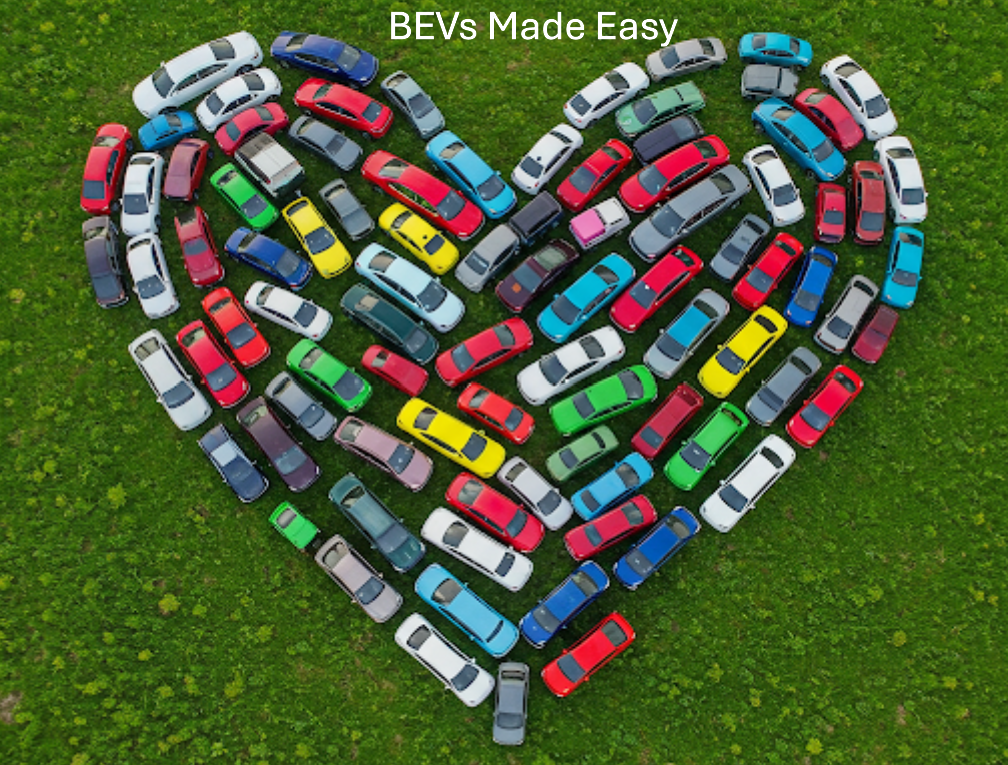
“EASY BEV” GUIDE 6: What Are The Main Types Of EV Chargers That EV Owners Use?
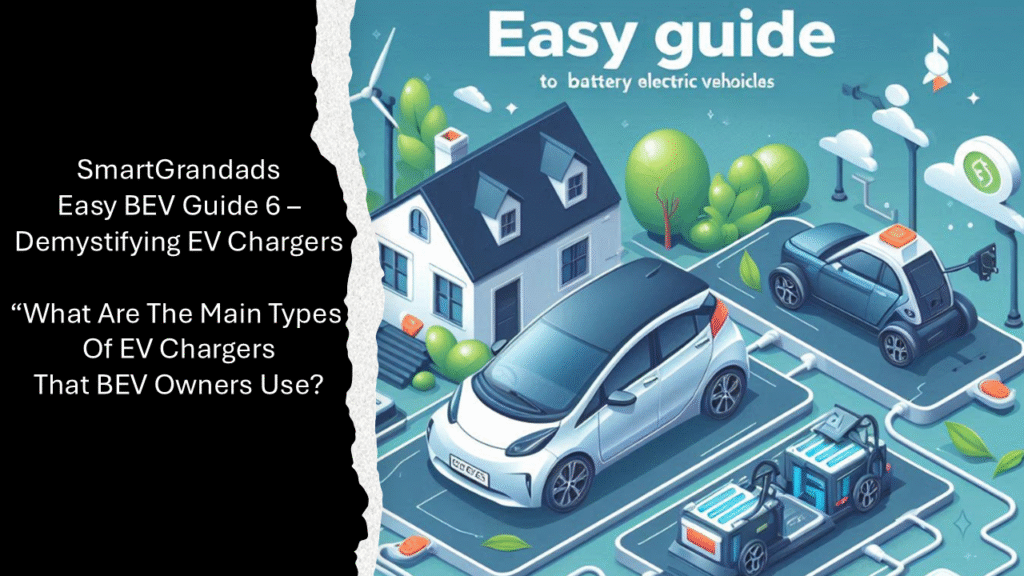
SmartGrandads "EASY BEV" Guides
Through a series of “EASY BEV” Guides, specifically aimed at potential and new Battery Electric Vehicles (BEV) owners, SmartGrandad will help remove any lingering fears.
SmartGrandad will give you some common sense, practical advice, making it easier to be informed about what BEVs are, how to choose which model is best for you.
With 6 plus years of driving different BEVs across Europe/UK and 30 years of delivering successful projects, I have plenty of Real World experience of assessing facts, dealing with challenges and reducing risks.
In SmartGrandads “EASY BEV” Guide 6, we will look at answering the question:
“What are the main types of EV Chargers that BEV owners use?”
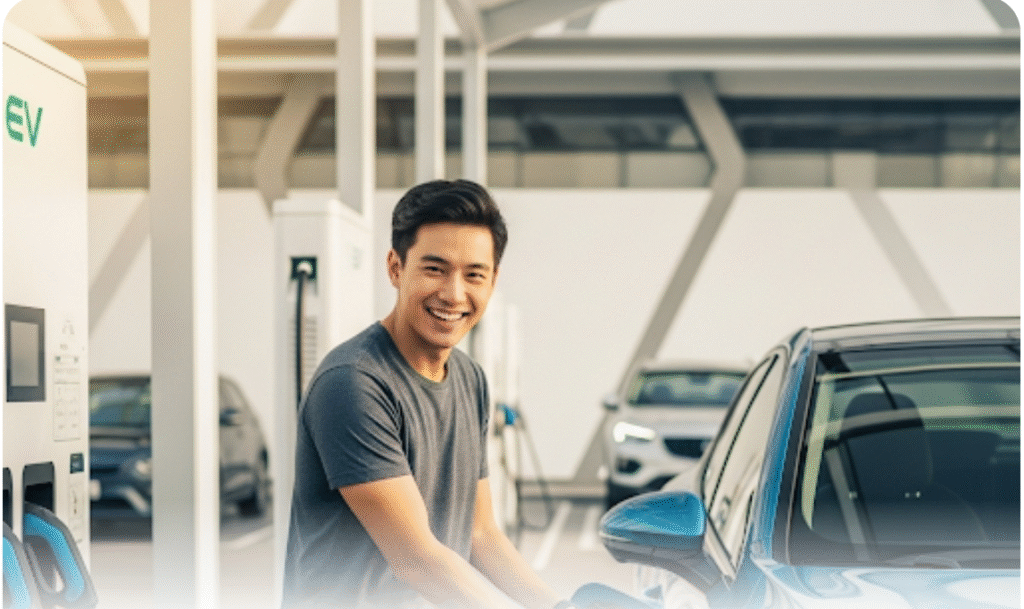
EV Charging: Made Simple - Avoid Anxiety
Fears about how and where to charge are one of the biggest negatives to those thinking of buying a BEV. But today, for those with EVs, it is not anything to worry about.
Understanding how to charge your Battery Electric Vehicle (BEV) is key to a smooth ownership experience. While it might seem complex at first, EV chargers can be grouped into a few main types, each offering different speeds and suitable for various situations. Let’s break them down!
First, a quick explanation of AC and DC:
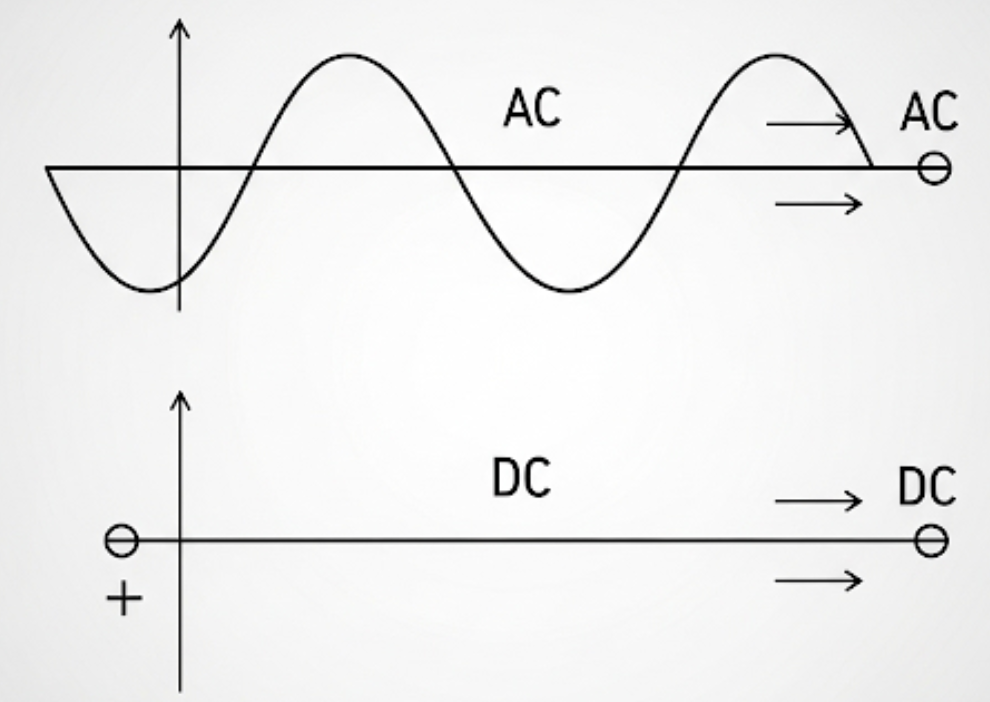
2 types of fuel, a bit like petrol and diesel, both can be used.
AC (Alternating Current): This is the type of electricity that comes from your home’s wall outlets. Your car’s battery can’t store AC directly, so it has a built-in “onboard charger” that converts AC to DC.
DC (Direct Current): This is the type of electricity your EV battery actually stores. DC chargers can add electricity to your car without the need for conversion from AC and therefore offer the quickest charging speeds.
The key difference in charger types comes down to where this AC-to-DC conversion happens.
The Main Types of EV Chargers:
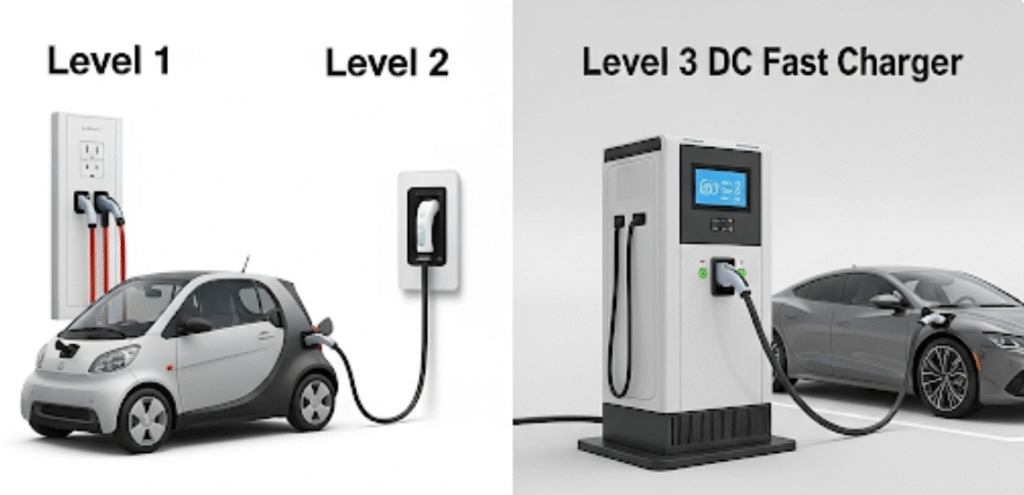
Level 1 Charging:
Very Slow using Household Plug
Where you’ll find it: Your standard home wall outlet (like the one for your lamp or phone charger).
How it works: You use a special cable that comes with your EV to plug into a regular 120-volt AC outlet (in North America) or a standard household socket (in Europe). Your car’s onboard charger does the AC-to-DC conversion.
Speed (2KW per hour): This is the slowest charging method. Think of it as a trickle charge, adding a few kilometers of range per hour. It’s great for overnight charging if you don’t drive long distances daily.
Best for: Daily top-ups to vehicles with smaller batteries, or when you have plenty of time (e.g., charging overnight while you sleep). It’s the most affordable to set up as it uses existing infrastructure.
Level 2 Charging:
Slow, Most Common Home/Work Charger
Where you’ll find it: Homes (with a dedicated charging station installed), workplaces, and many public charging stations (e.g., at shopping centers, hotels).
How it works: Level 2 chargers use a higher voltage AC power (240-volt in North America, or typically 230V single-phase or 400V three-phase in Europe). Again, your car’s onboard charger handles the AC-to-DC conversion.
Speed (11-22KW per hour): Significantly faster than Level 1. You can add a substantial amount of range in a few hours, often fully charging your car overnight or during a workday.
Best for: Everyday charging at home, convenient public charging while you’re parked for a few hours, or at work.
Level 3 DC Fast/Rapid/Ultra Charging:
Long Journey Rapid Topup
Where you’ll find it: Primarily at public charging stations, especially along motorways and major routes, designed for quick stops.
How it works: This is where the magic happens! Unlike Level 1 and 2, the AC-to-DC conversion happens inside the charging station itself, not in your car. This means direct DC power flows right into your car’s battery, bypassing your car’s onboard charger.
Speed (50-400+ KW per hour): This is the fastest way to charge your EV. You can often get a significant charge (e.g., from 10 to 80-100% battery) in 20-60 minutes, depending on the charger’s power and your car’s acceptance rate.
Best for: Long road trips when you need to quickly add range, or when you’re in a hurry and need a rapid top-up. These chargers are more powerful and just like motorway service stations, are more expensive to use.
Starting the Charge & Paying – Be Prepared.
Don’t arrive for your 1st Level 3 charge just to find that you have no way to start or pay for the charge, as there WILL NOT be a person who can take your money.
Not all Level 3 chargers have a credit card reader. So before you go, make sure you have a RFID card or App. Your vehicle manufacturer will have one, so setup an account with a payment method before you go. Charging Networks like Ionity and Shell also will have RFID cards and or Apps.
Connectors:
Just like different fuel nozzles for petrol or diesel cars, EVs use different “plugs” or connectors depending on the region and car manufacturer.
In Europe, there is only one standard for car connectors, so everyone use the same. Depending on the Level of the Charger, you’ll will use the one of the following cables;
- Level 1 Household Plug – cable usually purchased by the vehicle owner.
- Level 2 Home/Work/Street Charger – cable Type 2 (Mennekes) provided by vehicle manufacturer
- Level 3 DC Fast/Rapid/Ultra Charger – CCS2 cable is fixed to the charger
Notes:
In North America there is also NACS standard, (based on Tesla) which is becoming the standard in the US. Not used in the rest of the world.
CHAdeMO: Used by some older Japanese car models for DC fast charging, much less common in Europe.
EV Charging - Easier/ Cleaner & As Quick as a Petrol/Diesel than Fill Up?
Now that you understand what EV charging is all about, you will be confidently able charge your BEV wherever you go!
I guess that you have heard that it takes a long to time charge, compared with filling up with Petrol/ Diesel!
Well that too is not really the case, take these examples;
1. Charging Overnight at Home
– Your effort is 30 seconds to plug in and 30 seconds to unplug in the morning. Total 1 minute! Compare that to going to the petrol station, filling up, paying and returning home.
2. Charging at Motorway Services
– With the right car, usually a BEV with 800v architecture, charging from 10% to 90% will probably take around 20 minutes. But of course, when the car is charging, you can be getting a snack or a meal and visiting the facilities. With your petrol car its visiting the facilities, get something to eat and then fill-up with petrol. Probably about the same time taken.
In SmartGrandads "EASY BEV" Guide 7,
to be posted soon, I will cover some practical advice and what to take into consideration regarding BEV “Prices & Usage Costs”.
Please let us know what you would like to see in future SG BEV Easy Guides.
